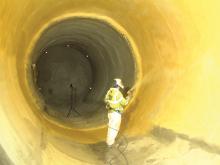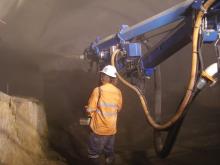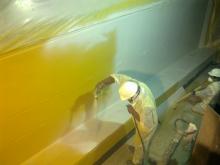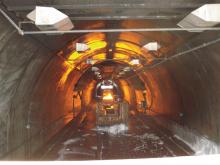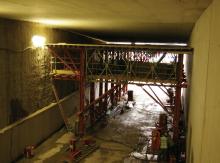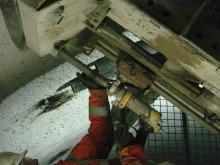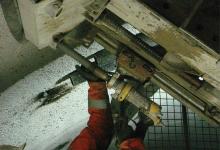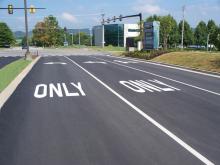The strong market for shotcreting technology has led BASF to hold a workshop for waterproofing specialists. The firm's latest system can be used to provide a permanent waterproof single-shell tunnel lining based on sprayed concrete and double-bonded waterproofing membrane.
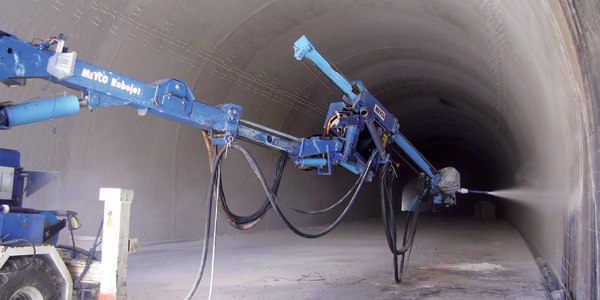
BASF's MEYCO division claims to have developed an innovative new bonded membrane and shotcreting package
The strong market for shotcreting technology has led 2645 BASF to hold a workshop for waterproofing specialists. The firm's latest system can be used to provide a permanent waterproof single-shell tunnel lining based on sprayed concrete and double-bonded waterproofing membrane. The novel double-bonded MASTERSEAL 345 membrane is at the heart of the system and is being used on key projects, such as a new tunnel in Trondheim in Norway. There are various design issues for the system when it is used in different applications. According to BASF, an important point for designers and engineers is to understand how sprayed concrete and a double-bonded spray-applied waterproofing membrane function together in a monolithic structure, creating a composite waterproof lining Sprayed concrete linings are widely used in tunnel building and provide a quick and effective construction technique. Depending on the tunnel geology, shotcreting may be sufficient in itself when placed over a bolted design and this technique is often used in drill and blast type tunnel projects in Scandinavia. However in other projects where the ground conditions are not so homogenous, concrete tunnel lining sections may be installed over the shotcreted surface.
BASF says that its new2646 MEYCO system offers an innovative and cost-effective method for tunnel waterproofing and has shown significant project savings over conventional double-shell method on some recent projects. The firm claims that a bonded waterproofing membrane can address technical problems that have proved difficult to combat with conventional sheet membranes. The bonded membrane is said to prevent the migration of water along the concrete-membrane interfaces on either side of the membrane. Meanwhile the tensile bonding and shear strengths of the combined concrete and membrane provide the mechanical behavior of a composite structure. This is said to allow the primary support lining and the inner final lining to work together and effectively become part of the permanent support structure. Both the primary lining and secondary lining, together with the bonded membrane, can be designed to offer a permanent, long-term, durable and waterproof tunnel lining, according to BASF. The MASTERSEAL spray-applied system is well suited to use in underground structures with complex geometries, such as lay-by niches, cross passages, turnouts and crossover caverns.
The system is said to be quicker to use than many conventional technologies and can help reduce project costs by cutting installation time. At the same time, MEYCO claims that it offers superior performance in the right applications.
BASF says that its new
The system is said to be quicker to use than many conventional technologies and can help reduce project costs by cutting installation time. At the same time, MEYCO claims that it offers superior performance in the right applications.

